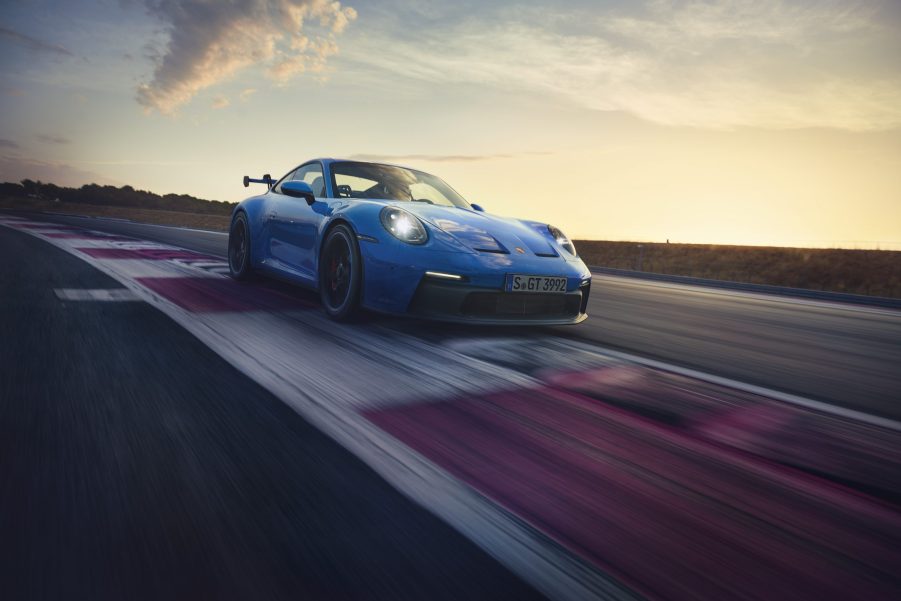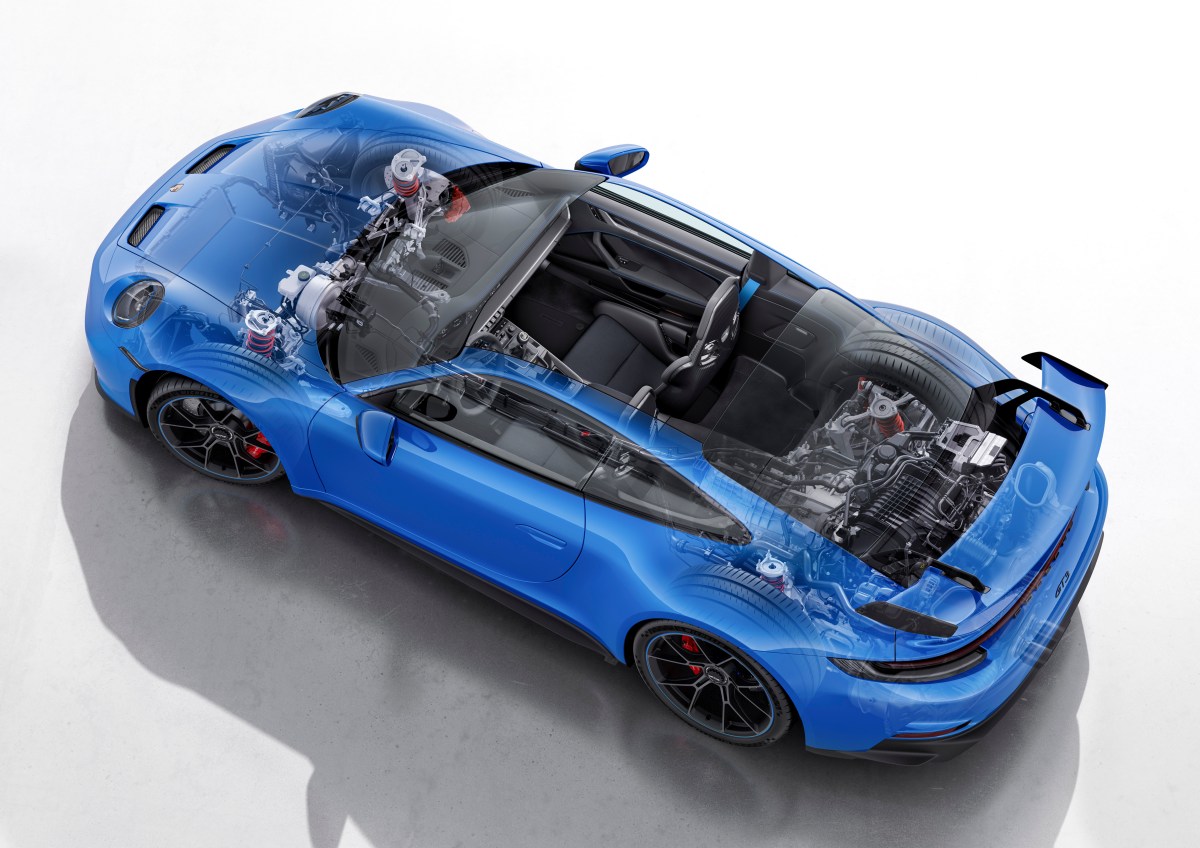
Motor Trend Crowns the Porsche 911 GT3 King of the Performance Cars
The Porsche 911 GT3 is the hard-core, stripped-down, race track focused version of the standard 911. It’s a car designed to drive to a race track, be the fastest on the race track, and then drive you home from the race track.
The true brilliance of the car lies in the engineering. The engine is in the wrong place, and the same basic formula for making a 911 hasn’t changed much since the original car debuted in 1965. But, the engineers at Porsche have evolved the original idea into a car that can set blistering lap times and be usable every day.
Motor Trend recently announced the winner of their new Performance Vehicle of the Year Award. To the surprise of very few people, they chose the Porsche 911 GT3 as the winner. Let’s look at this astonishing car and find out what makes it so great.
2022 Porsche 911 GT3, the specs that matter

The Porsche 911 GT3 follows the same formula as the rest of the 911 model range and shares the same basic chassis. Two doors, two seats, an engine in the back, and unrivaled quality of construction.
The engine is the star of the show in the GT3. A 4.0-liter flat six-cylinder engine makes 502 horsepower and 346 pound-feet of torque. There are no turbos here, just a silky smooth big six-cylinder engine that barks and growls around town and sings like a banshee on the race track.
All of that 502 horsepower translates into a 0 to 60 mph time of 3.2 seconds, with the PDK transmission, or 3.7 seconds with the manual transmission. The top speed is about 200 mph. Both of those stats are largely irrelevant. This car is about the lap time, not top speed. There is no race track in the U.S. where you can reach the GT3’s heady 200 mph top speed.
What does matter in the GT3 is weight. At 3,126 pounds, the svelte sports car has less bulk to haul around a circuit. As we discussed in the Acura TLX Type-S track test, weight is the enemy of fun. The brakes are massive, 16-inch rotors up front with six-piston calipers. Ceramic-composite brakes are an option and a good one too, especially if you plan on spending a lot of time on the race track.
Here’s why the 911 GT3 won
Motor Trend pitted the 911 GT3 against heavy-weight challengers in the form of the Lamborghini Huracan STO and Mercedes-AMG GT Black Series. Both of those cars are faster around a race track than the GT3.
One might ask the question, “Why didn’t the fastest car win?” It’s a valid point, especially when comparing performance cars, but performance isn’t just about numbers; it’s also about sensations. The GT3 is far and away the best experience. It’s usable every day, flatters the driver by being fast without being scary, and rewards excellent driving. The AMG GT and Huracan STO will punish you if you take liberties with them. They require a fair amount of driver skill to get the most out of them on a track. Porsche has done a fantastic job to engineer out all of the characteristics that used to make driving a 911 at the limit scary and has created in the GT3 a car that can get you moving very fast while not being overly intimidating.
Here’s a snippet of what Motor Trend had to say about the 911 GT3, “Head of editorial Ed Loh went a bit cerebral trying to explain what’s so great about the GT3: “It makes you feel sharper and more in tune with everything—from the soles of your feet to the pads of your fingertips, all the way to the base of your skull and the lizard part of your brain that ensures you don’t die in your sleep.” Executive editor Mac Morrison was more succinct, simply offering, “Sheeeeeezus H. Porsche. Maaaaannnnnnn.”
What is this car like to drive?

In a word, astonishing. Every generation of the 911 GT3 seems to get better and better. Not just in terms of lap times but also in how they feel and communicate information to the driver. The older 997 generation GT3 was fantastically fast. But, the front end was so light that it hopped around, providing less feedback than what you really needed to drive it fast. It also required lots of trail-braking at corner entry to manage the engine’s weight hanging out of the back. It was a difficult car to drive fast at anything below its absolute limit, not so in the current GT3.
The Porsche engineers have done a fantastic job of getting the car’s front end to feel planted and razor-sharp. It is incredibly intuitive with loads of grip and feedback that gives drivers all the information they need to push the car hard on a track.
The feedback and sensations through the steering wheel, seats, and pedals contribute to a better driving experience than its rivals and allow drivers to get the most out of the GT3 without any guesswork. The engine pulls hard, the chassis is near-perfect, and the brakes are phenomenal. All of this combines to create a car that is blisteringly quick, usable every day, and highly rewarding to drive. No wonder it won Motor Trend’s Performance Vehicle of the Year Award.
Related: 2022 Porsche 911 GTS vs. Porsche 911 GT3: Pick Your Poison






